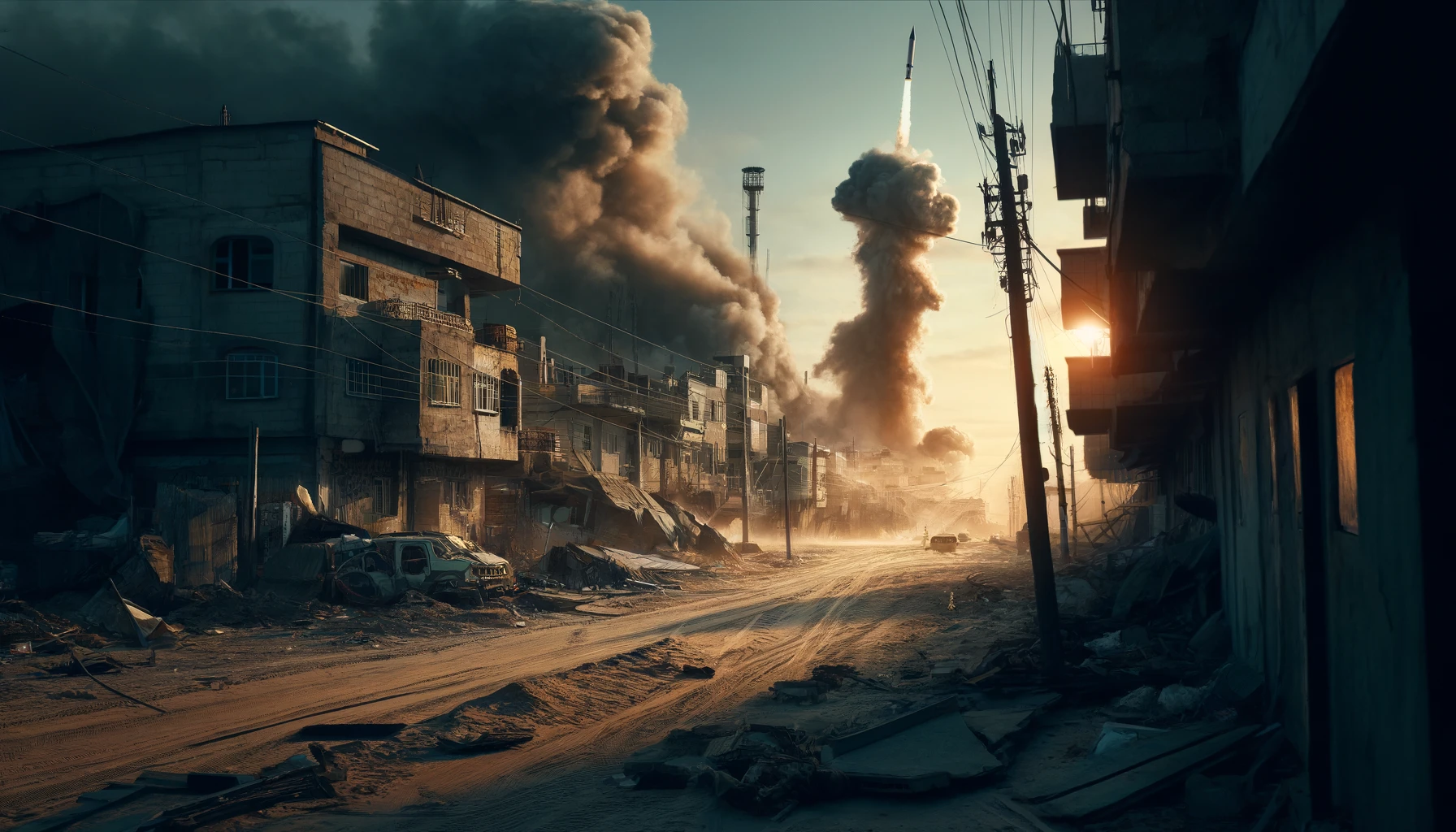Last October, after Hamas launched an attack on Israel, triggering the conflict in Gaza, Israeli leaders labeled Yahya Sinwar, the top official of Hamas in the region, as a “dead man walking.” They viewed him as a key planner of the attack and emphasized that his elimination was a critical objective in their forceful response.
Now, seven months into the conflict, Sinwar’s continued presence highlights what some see as shortcomings in Israel’s military efforts. Despite extensive damage in Gaza, the senior leadership of Hamas remains mostly unharmed, and many captives from the October incident remain unrescued.
Israeli authorities, despite their intentions to eliminate him, find themselves compelled to indirectly negotiate with Sinwar to secure the release of hostages. Recognized both as a decisive leader and a cunning negotiator, Sinwar has successfully resisted Israeli military advances while also participating in diplomatic talks through intermediaries in Egypt and Qatar, as per various sources, including those from Hamas, Israel, and the U.S.
Contrary to some claims, Hamas leaders assert that Sinwar does not hold ultimate decision-making power in the organization. Nonetheless, his significant influence within the Gaza Strip and his commanding personality have positioned him as a crucial figure in Hamas’s operations, as noted by both allies and adversaries.
Salah al-Din al-Awawdeh, a member of Hamas and a political analyst who knows Sinwar personally, emphasizes his influential role: “There’s no decision that can be made without consulting Sinwar,” indicating his pivotal role despite not being the formal leader of all of Hamas.
Sinwar’s low public profile since the war began contrasts with other Hamas officials who are based outside Gaza, like Ismail Haniyeh, the organization’s top civilian leader. Though officially ranked below Haniyeh, Sinwar plays a central role in Hamas’s strategy to push for a permanent ceasefire, as per American and Israeli officials.
The negotiations for hostages have been sluggish, often hampered by damaged communication networks in Gaza, sometimes causing delays of a day for messages to reach Sinwar and responses to return, as described by U.S. officials and Hamas members.
Throughout these negotiations, which recently stalled again in Cairo, Sinwar has emerged as both a formidable foe and a skilled political strategist, adept at understanding Israeli society and adjusting his tactics accordingly, according to both Israeli and U.S. officials.
As the initiator of the October 7 attacks, Sinwar orchestrated a plan expected to provoke a strong Israeli response. For Hamas, the resulting civilian casualties in Palestine were seen as a necessary sacrifice to disrupt the ongoing status quo with Israel.
Intelligence assessments by American and Israeli agencies suggest that Sinwar is driven mainly by a desire to retaliate against Israel and weaken it, with less emphasis on the welfare of the Palestinian people or the establishment of a Palestinian state.

Sinwar’s deep understanding of Israeli society, gained from learning Hebrew and studying Israeli culture during his more than two decades in Israeli prisons, has been a tool in his strategic arsenal. Released in 2011 in a prisoner swap, Sinwar later ascended to leadership within Hamas in Gaza. He uses his insights to influence Israeli public opinion and apply pressure on Israeli leadership, especially during critical moments in the ceasefire discussions.
This ability to manipulate public sentiment in Israel has been noted by both allies and adversaries, marking Sinwar as not just a military leader but a potent political figure as well.
Israeli and U.S. intelligence sources claim that Sinwar aims to extend the conflict with Israel as long as possible in order to harm Israel’s global standing and weaken its ties with the United States, its main ally. This strategy seemed evident when Hamas launched rockets from Rafah, resulting in the deaths of four Israeli soldiers. This incident prompted an Israeli military action around Rafah, which coincided with President Biden expressing severe criticism of Israeli tactics, a move that included threats to halt certain future arms shipments if Israel expanded its military operations into the heart of Rafah.
U.S. intelligence suggests Sinwar might be in underground tunnels near Khan Younis, north of Rafah, which could challenge the justification for Israeli military actions in Rafah.
Amidst these developments, Hamas insists that it seeks to end the conflict immediately to prevent further suffering among Palestinians. This sentiment was echoed by Ahmed Yousef, a senior figure in Hamas from Rafah, who called for an end to what he described as the genocide of Palestinians.
American intelligence indicates that Sinwar has been critical of his colleagues outside Gaza, who were reportedly unaware of the detailed plans for the October 7 attack. Sinwar is believed to endorse military strategies, though the extent of his involvement is debated among Israeli intelligence officials.
During cease-fire talks, a senior Western official noted that Sinwar often makes decisions in consultation with his brother, Muhammad, a leading military figure in Hamas. Unlike some Hamas leaders who are more open to compromise, Sinwar tends to resist concessions, partly because he believes he is likely to be killed whether the conflict ends or not.
Even if a cease-fire is agreed upon, Israeli forces are expected to continue pursuing Sinwar for the rest of his life. Internally, Hamas portrays a unified front, minimizing Sinwar’s personal influence and asserting that decisions are collectively made by Hamas’s elected leaders. However, Mousa Abu Marzouk, a high-ranking Hamas official, acknowledged Sinwar’s significant influence due to his leadership position within Gaza.
Sinwar’s unique leadership style has been pivotal during the war, according to Salah al-Din al-Awawdeh. He suggested that another leader might have managed the situation more calmly.
Sinwar has been elusive since the war’s start, with U.S. and Israeli officials alleging he is using hostages as human shields. An Israeli hostage released during a truce claimed she encountered Sinwar during her captivity.
In a related development, the Israeli military released a video reportedly showing Sinwar fleeing through a tunnel with his family, though the video’s authenticity and the identity of the individuals shown could not be confirmed.
This article is based on the following article:

Background Information
This background will provide readers with a comprehensive understanding of the complex dynamics at play in the article, offering insight into the motivations, actions, and repercussions for the people involved in and affected by the Israeli-Palestinian conflict.
1. The Israeli-Palestinian Conflict:
- Origins and History: The conflict dates back to the early 20th century, with tensions rising over territorial claims and national identity between Jews and Arabs in Palestine. After the establishment of Israel in 1948, several wars and uprisings have shaped the current borders and continued disputes.
- Key Players: Israel, the Palestinian Authority, and Hamas. Israel is a country recognized internationally. The Palestinian Authority governs parts of the West Bank and seeks to establish a Palestinian state. Hamas is a militant Islamist group that controls Gaza and does not recognize Israel’s right to exist.
- Significant Events: Include the Six-Day War in 1967, where Israel captured Gaza and the West Bank, and the various Intifadas (Palestinian uprisings) that have occurred since the late 20th century.
2. Hamas and Gaza:
- Hamas: Founded in 1987 during the First Intifada, Hamas is considered a terrorist organization by Israel, the United States, and the European Union. Its charter initially aimed for the destruction of Israel and the establishment of an Islamic state in all of historic Palestine.
- Gaza Strip: A small, densely populated territory along the Mediterranean coast. Gaza has been under Hamas control since 2007, following a conflict with the Fatah party, which now primarily governs the West Bank.
3. Military Strategies and Humanitarian Impact:
- Tactics: Both sides use various military tactics. Israel employs air strikes and ground operations. Hamas uses rocket attacks and tunnels for smuggling and launching attacks.
- Civilian Impact: The conflict heavily affects civilians. In Gaza, infrastructure damage and casualties frequently result from Israeli strikes, often justified by Israel as necessary to target Hamas. Hamas’s rocket attacks aim at Israeli civilian areas, causing fear, casualties, and pressure on the Israeli government.
4. International Relations and Diplomacy:
- Global Positioning: The United States is a key ally of Israel, providing military and diplomatic support. Other countries, like those in the European Union and the Arab League, have varying stances, often calling for peace negotiations and criticizing military escalations.
- Diplomatic Efforts: Repeated attempts to broker peace, including the Oslo Accords in the 1990s and various cease-fire agreements, often mediated by countries like Egypt and international organizations like the United Nations.
5. Current Issues and Leaders:
- Leadership Figures: Understanding the roles of figures like Yahya Sinwar in Hamas and Israeli leaders helps contextualize decisions and actions within the conflict.
- Recent Conflicts: The specifics of recent skirmishes, such as the events described in the article, show the ongoing nature of the conflict and the difficulty of reaching a lasting resolution.

Debate/Essay Questions
- Can violent resistance be justified as a strategy for oppressed groups to achieve political goals, as seen with Hamas’s attacks from Rafah?
- Should international allies, like the United States, impose conditions on their support to influence the actions of their allies in conflict?
Please subscribe to Insight Fortnight, our biweekly newsletter!
